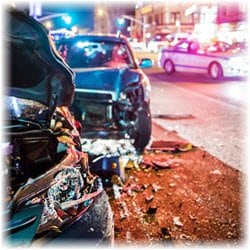Common Myths: When to Not Get Behind the Wheel
 For many people, driving a vehicle is a necessary function of everyday life. However, there are certain times when it is safer to get a ride than to get behind the wheel. Here are some common misconceptions people have about impaired driving.
For many people, driving a vehicle is a necessary function of everyday life. However, there are certain times when it is safer to get a ride than to get behind the wheel. Here are some common misconceptions people have about impaired driving.
“It’s no big deal for me to drive when the weather is bad as long as I’m careful.”
Driving in poor weather conditions is always dangerous. According to the Federal Highway Administration, 22% of accidents each year are weather-related. Even if you’re a cautious driver, you may end up in an accident with another car that has spun out of control. If you’re in a situation where you must drive, be sure to drive slow, keep your windows clear, be patient with other drivers and keep your mind/vision clear of anything that could distract you (especially your cell phone)!
“I can drive when I’m tired as long as I drink coffee first.”
It is never safe to drive when you are tired. If you are seriously sleep-deprived, you may still have “micro sleeps” even if you drink something with caffeine in it. These are brief losses of consciousness that may last for four or five seconds. That’s plenty of time to cause a crash. Keep alert for signs you are drifting off, such as crossing over roadway lines and rumble strips. If you realize you’re having trouble staying awake, pull over in a safe, well-lit location and sleep for a few hours until you feel more rested.
“Sometimes I get lost but eventually I figure out where I’m going, so it’s nothing to worry about.”
Forgetfulness, especially in older adults, may be a sign of a serious health condition that requires medical attention. Often forgetfulness is caused by a lack of oxygen to the brain. Neurologic, cardiac and pulmonary conditions all contribute to impairment and the inability to operate a vehicle. If you start having symptoms that affect how you drive—including forgetfulness, vision problems, shaking, dizziness, or loss of consciousness—see a doctor. Don’t get behind the wheel again until you know more about your condition and how to treat it.
“If I only have a couple of beers, I can still drive home.”
Alcohol reduces brain function by impairing thinking, reasoning and muscle coordination. It is illegal in all 50 states to drive with a blood alcohol level of .08 or higher, but even a small amount of alcohol may affect your ability to drive. In 2019, there were 1,775 people killed in alcohol-related crashes where the driver’s blood alcohol level was below the legal limit. If you’ve been drinking, the safest thing to do is call for a ride.
“I can drive after smoking marijuana if my doctor has prescribed it to me.”
Whether or not you have a prescription for it, marijuana still impairs the ability to drive because it slows coordination, judgment, ability to concentrate and reaction times. In fact, 56% of serious and fatal accidents are caused by someone driving under the influence of marijuana or other drugs. If you have taken any drugs, you shouldn’t drive until the substance has left your system.
“I can drive if I’m taking over-the-counter medication.”
Some over-the-counter and prescription medications may cause drowsiness, dizziness and other impairing side effects. Read all directions on medications. If it says “do not take while operating heavy machinery,” then you shouldn’t drive while taking it.
Next time you find yourself willing to get behind the wheel under less-than-ideal conditions, ask yourself if it would be safer to get a ride. This simple check-in can not only save your life but also the lives of other drivers on the road.
Copyright 2021 © Baldwin Publishing, Inc. All rights reserved. Health eCooking® is a registered trademark of Baldwin Publishing, Inc. Cook eKitchen™ is a designated trademark of Baldwin Publishing, Inc. Any duplication or distribution of the information contained herein without the express approval of Baldwin Publishing, Inc. is strictly prohibited.